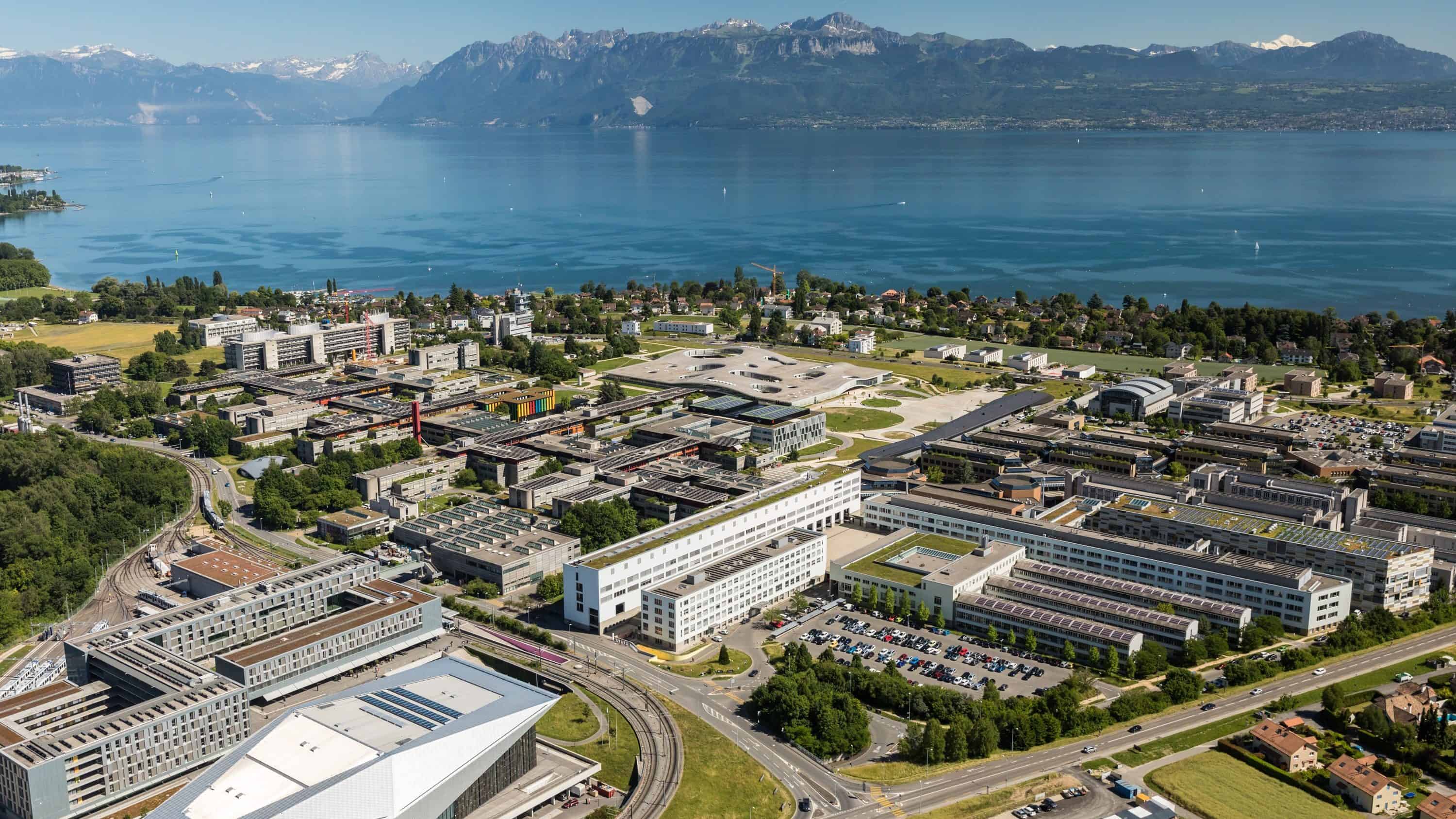It is a long way from tinkering around with one of the early 3D printers to launching a startup that brings 3D printing of carbon fiber composites to mass production. Martin Eichenhofer, CEO and co-founder of 9T Labs, explains how it all started and why their first customers are happy to work with their first product.

CEO and co-founder of 9T Labs
Martin Eichenhofer is CEO and co-founder of 9T Labs. Based in Zurich, 9T Labs automates 3D-printing of carbon fiber composites for series production. Martin has an M.Sc. in Mechanical Engineering from ETH Zurich.
Where does your interest in 3D printing come from?
About seven years ago, there was a big hype surrounding the first 3D printer kits. I’m a mechanic by training. I’ve always liked building things, so I was quite excited as well. My brother bought a Mendelmax 2, that was my first contact with this technology, which took me by storm.
Playing with a printer at home is one thing, starting a company that wants to change 3D printing quite something else. When did you decide on that?
Already during my Master studies at ETH, my brother and I filed for the first patents, which put us under some (financial) pressure to actively work and pursue a commercialization strategy. My co-founders Chester and Giovanni were my students while I was doing my Ph.D. at ETH Zurich, that’s how we met. We’ve talked a lot about the possibilities of automating composite manufacturing and 3D printing. When we won a startup competition called AdVenture organized by McKinsey at the Startup Summit in St. Gallen, we decided to get serious. In autumn 2017 we concretely shaped plans to found 9T Labs, which got incorporated in January 2018.
What did you accomplish since then?
From the technical side, we developed the first generation of printers, the materials, and the software to the point that we could approach our first customers, and we already have more than 30 of them. When it comes to the development of 9T Labs as a company, we managed to build a great team and company culture.
How do you sell a 3D printer to a company?
It takes time to convince people of new technologies. You can’t just go into a meeting and sell a printer or software for series production, you have to get people interested in exploring something new, which benefits them mid and long term. We wanted to work together with customers early on, build relationships, and not just develop our product in isolation. This was extremely important for us and I’m glad we started approaching customers early. You can offer early customers something unique: They are able to shape our next product with their inputs.
“You have to get people interested in exploring something new, which benefits them mid and long term”
What kind of input from this process was most valuable for you?
All of it was very valuable but there are several things that stand out. At first, we thought that we would have just one machine, the printer. However, customers told us that the quality of printed components needs to be at least on par with traditional carbon fiber manufacturing methods and that they wouldn’t accept any trade-offs. This is why we developed a second machine as part of our secret sauce that ensures a high quality of the components by compressing them in a second post-consolidation step. Another learning from working with clients was that we concentrate our efforts on the “small parts” market in the beginning. In this context, small means less than 50x50cm. This size of parts is where our approach is very efficient and where we can provide a lot of value for our customers in terms of costs and performance. Manufacturing very large pieces with robotic arms is where we originally come from, however, the added value for the customer is smaller and as a consequence less lucrative in the beginning.
I imagine that working together with clients also gave you some insights where the most interesting application of your technology will be.
Yes, this was one of the main motivations to go as early as possible to the market. There are several industries that show promising use-cases that have a technical and economical sweet spot. In aerospace, everything that belongs to the interior of airplanes and is manufactured in large series can be interesting because of the reduced weight. If we can reduce the weight of an airplane seat by one kilogram, that translates into 10’000 liters of kerosene saved over the lifetime of the plane. There is also the Medtech industry, which already uses carbon fiber composites in many small parts. Our technology provides an extreme cost reduction potential for this industry. Other interesting applications are in the watch, sports shoe, and bike industry, where the quantities run into the high thousands. Interestingly enough, people talk about mass customization a lot in the context of 3D printing, but I haven’t seen a very lucrative application of this concept in composites yet, the market is rather asking for automation and the next-generation software solution.
Why do you have to develop your own software to run your printers?
The standard printer software isn’t able to cope with the complex questions associated with long fibers. The huge potential lies in the optimal fiber arrangement to realize lighter parts and “smart” automation features to reduce the engineering time. In addition, to use the software as a design tool and interpreter for the printing machines, we can generate a “digital twin”, which allows us to simulate the behavior of the part before we even printed it. That’s what our software does, and it is a key element of our value proposition.
Engineers love to tinker, as you said. How long will you continue improving your prototype?
The design freeze will happen before the end of the year. We want to be ready to scale with our industrial product in Summer 2020. The international expansion beyond Europe is planned for 2021. At the moment we are hiring sales engineers and application engineers to develop our customer base and prepare the production use cases. For us, it is important to have flagship customers with series production applications in various industries.
3D printing started out with big promises. But will it deliver?
Yes, but perhaps in a way that is different from what was imagined a few years ago. Today, 3D printing is mainly employed for prototype parts. This is relevant, but the big impact will only manifest itself when 3D-printing is used for series production. I think that no matter what material you take, plastics, metal or composites, you’ll need a combination of printing and conventional manufacturing methods to realize efficient manufacturing of series production parts. Our goal is to establish a fully automated and cost-competitive alternative manufacturing process for fiber composites of production parts. The market potential is enormous.
“The big impact will only manifest itself when 3D-printing is used for series production”
How difficult is it to raise funds for a hardware startup?
The problem with hardware is that you need a lot of different skills in a team, especially if it is a complex system including materials and software like ours. To build such a team requires a large amount of capital quite early. It isn’t easy to raise several million with a product that isn’t yet ready to scale. The idea and team need to be quite convincing, and you need to find investors that understand hardware and the associated sales cycle. More and more investors realize the enormous potential of hardware-related startups, which returns materializes not as quick as pure software startups, however, when hardware scales it generates massive revenues and high profit margins. Important for a successful business model is the seamless integration of all components and services inside the overarching software solution, which provides high value to customers and at the same time locks in customers over a long period of time. Such an integrated solution makes a company very interesting for an acquisition or potential IPO down the road.
Is the life as startup CEO like what you expected?
To be honest, I didn’t think a lot about how it would be. I personally think motivation, curiosity, and confidence together provide what you need to found a startup, the only important last step is to actually just do it and not to think about it for too long. I have to emphasize that the team is key, I have great co-founders, without this great support and joint effort there would be no successful startup. There is always action in a startup, you explore and learn every day something new together with likeminded people, this is what I enjoy the most.
Written by
WITH US, YOU CANCO-INVEST IN DEEP TECH STARTUPS

Verve's investor network
With annual investments of EUR 60-70 mio, we belong to the top 10% most active startup investors in Europe. We therefore get you into competitive financing rounds alongside other world-class venture capital funds.
We empower you to build your individual portfolio.
More News
08.02.2021
The next generation of venture capitalists
Investiere is proud to announce the launch of its first Venture Fellowship Program with the Cambridge University Venture Capital and Private Equity Society (CUVCPES). In this interview, the Society’s chairwoman, Shelby Newsad, and President, Michelle Parker, talk about their interest in venture capital and explain the program’s goal.
16.09.2019
“Startups in Switzerland have great potential”
EPFL is not only one of the best universities in the world, but also a place where promising high-tech startups are created. Verve Ventures has backed a lot of them. We visited Prof. Martin Vetterli, the president of EPFL, in Lausanne and talked about science, technology, and entrepreneurship.
Startups,Innovation andVenture Capital
Sign up to receive our regular newsletter and learn about investing in technologies that are changing the world.



